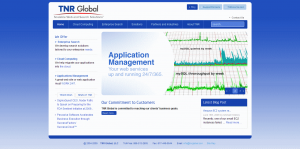Bio-Linux and other bioinformatics tools available for EC2, Amazon’s Elastic Compute Cloud, were recently highlighted on the Amazon Web Services (AWS) blog. Customized Amazon machine images (AMIs) allow for the packaging and rapid, web based deployment of the data sets and tools needed for these specialized tasks. Because AMIs can be saved, reproducing past results is simplified and because these can also be shared, the computation environment of a particular analysis can be easily replicated both from within and outside your organization.
Author: tg_admin
MySQL Error: BLOB/TEXT used in key specification without a key length
Recently, I was populating a database with lines from a number of log files. One of the key pieces of information in each of these log lines was a URL. Because URLs can be pretty much as long as they want to be (or can they?) I decided to make the URL field a Text type in my schema. Then, because I wanted fast lookups, I tried to add an index (key) on this field and ran into this guy:
ERROR 1170 (42000): BLOB/TEXT column ‘field_name’ used in key specification without a key length
It turns out that MySQL can only index the first N characters of a Blob or Text field – but for a URL, that’s not good enough. After talking it over with my team members, we decided to instead add a field – url_md5. By storing the md5sum of each URL, we could index on the hash field and have both fast lookups and avoid worrying about domains like this fitting into a VARCHAR.
TNR Global accepting applications for paid part-time internships
TNR Global is accepting applications for part time paid internships in Python Programming, System Administration, Joomla! Template Design and PHP Programming. Most of the work is done via telecommuting, but interns must be able to attend occasional meetings in Greenfield, MA.
TNR Global Launches New Website
TNR Global launches new corporate website. Before and after shots:

Jeremy Maryott passes the RHCT and RHCE exams and scores 100%!

Jeremy Maryott, System Administrator at TNR, passes the RHCT and RHCE exams and scores 100%! Jeremy has been with TNR for two years. He has experience with administering web, mail, DNS, and database servers, as well as virtualization technology such as OpenVZ and Amazon’s Elastic Compute Cloud (EC2).
Great work, Champ!
Ross Farinella, Information Assurance Expert, Joins TNR’s Search Team
 Ross Farinella, Information Assurance expert, joins the search team at TNR. Ross’ interests in enterprise search include performance tuning, end-user experience, and learning algorithms. He has hands-on expertise with many tools, technologies and platforms including Java, C++, PHP, Python, XHTML/CSS, Javascript, Apache, MySQL, Windows Server, and various Linux distributions.
Ross Farinella, Information Assurance expert, joins the search team at TNR. Ross’ interests in enterprise search include performance tuning, end-user experience, and learning algorithms. He has hands-on expertise with many tools, technologies and platforms including Java, C++, PHP, Python, XHTML/CSS, Javascript, Apache, MySQL, Windows Server, and various Linux distributions.
ShofarSites Featured in the Jewish Ledger
ShofarSites, a division of TNR Global, which creates Joomla! based web sites for synagogues, created a new web site for Congregation Beth El of Norwalk, CT. Read about it in the Jewish Ledger.
FAST ESP Overview
Michael McIntosh, a Senior Search Software Engineer at TNR Global, provides an overview of the FAST ESP Enterprise Search Engine.
Working with missing Makefile.PL scripts in CPAN modules
Some versions of CPAN (notably, the one that ships with Red Hat / CentOS 4.6, v1.7601) will automatically attempt to create a ‘Makefile.PL’ script if a module you’re trying to install through CPAN is missing one. However, sometimes this may lead to an error during the module installation, usually something like: “Too early to specify a build action ‘Build’. Do ‘Build Build’ instead.”. This appears to be caused by a missing argument to ExtUtils::MakeMaker’s WriteMakefile subroutine. If the ‘PL_FILES’ argument doesn’t exist, MakeMaker will incorrectly attempt to use the Build.PL file included with the module. Continue reading “Working with missing Makefile.PL scripts in CPAN modules”
Per-directory access restrictions with Trac and Subversion (mod_svn)
The below assumes that you are requiring a login to access Subversion over http(s) and Trac, and that the credentials users use for each service are the same.
Your access control file:
Both Trac and mod_svn use the same access control file format, so you should only need one file for both. The file format is described in some detail here, but I’ll go over some basics. Continue reading “Per-directory access restrictions with Trac and Subversion (mod_svn)”

